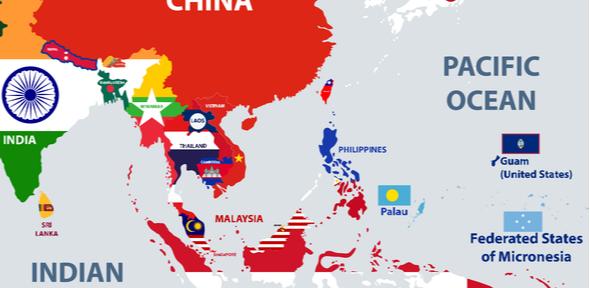As the locus of economic activity shifts from the North Atlantic to the Indian and Pacific oceans, it becomes important to revisit the idea of global geostrategic landscape and formulate a mental map to understand the complex equations of a changing world. The two oceans combine the world’s largest economies and populations, thereby drawing the attention of policymakers towards this region. As Australian Prime Minister Scott Morrison stated recently addressing AUKUS, “The future of the Indo-Pacific will impact all our futures.”
Indian Ocean’s growing strategic significance makes this region more important strategically. Across the world, seas are becoming geopolitically important. Having been the key route for maritime trade through shipments and connecting Middle East and East Asia via Malacca straits, Indian Ocean security is becoming a major foreign policy agenda for many countries. Indian Ocean Sea Lanes of Communication are an important trade route for maritime trade and any kind of instability in the region will make these countries vulnerable as they are dependent upon the trade corridor for their economy and energy security.
Growing Significance of Indo-Pacific
China became a net importer of oil in 1993 and then onwards it started expanding its navy in the Indian Ocean region. As China realized the potential that naval power holds for its economic interests and for enhancing its soft power, it started modernizing its naval presence to expand its maritime influence. Three major key developments brought the spatiality of Indo-pacific to the forefront of modern geopolitical imaginations. The first was China’s growing assertive foreign policy since 2013. A few years later, in 2017, the term ‘Indo Pacific’ found its reference in U.S. National Security Strategy. Following this, Quad countries (U.S., Australia, India, and Japan) reunited in Manila after a decade, reinforcing the increasing geopolitical significance of the region. In the following year, the U.S. Pacific Command has renamed the U.S. Indo Pacific Command while it continued having the same responsibilities. The message was clear. America’s grand strategy and its geopolitical visualization pertaining to Indo-Pacific and the maritime space was being expanded and demarcated at the same time, in terms of its priority. U.S. definition of maritime space of Indo-Pacific included the Pacific and the Indian Ocean up to India’s western coastline.
The growing usage of the term Indo-Pacific on international platforms signifies its increased relevance in the foreign policy strategy of great powers in the world. Indo-Pacific was a term more rapidly used by geographers and marine biologists, however, these days it is being growingly used by the politicians and bureaucrats at high tables of global diplomacy. During the recent G7 meeting, Indo-Pacific was a term that reflected the volume and concern of the Biden administration as well as Scott Morrison’s government in Australia, suggesting increased relevance in the foreign policy framework of western powers.
For the past 30 years, Australia sought America’s leadership in regional multilateral institutions such as ASEAN, APEC, and East Asia Summit. While Former President of the US Donald Trump neglected such a multilateral platform as he never attended any East Asia Summit. This created a gap that was filled by the Chinese leadership as it grew its influence in the region. As a departure from the past, President Biden’s administration made sure that it shows up in the ASEAN meeting.
A new trend in the foreign policy framework of the countries can be seen with the growth of minilateral groupings. Growing economic competition and increased US-China rivalry has opened the doors for minilateral strategic cooperation. Biden’s National Security Advisor Jake Sullivan suggests that it is easier to forge consensus among small groups and seek strategic engagement. America’s strategic move to build Quad (the US, Australia, India, and Japan) tells the story that China will not be the only power governing the regional order in the region. As power struggles build up in the Indo-Pacific region, Australia, US and UK have signed a trilateral agreement to build more nuclear submarines to bolster security in the region to send a strong sign of increased deterrence. As China builds its nuclear submarines in southern China at an unprecedented rate, the trilateral agreement holds the potential to provide deterrence against it in the Indo-Pacific.
On its 70th anniversary, Australia’s Prime Minister Scott Morrison stated in parliament that ANZUS was the pillar of Australia’s national security to ensure peace and stability in the region. In September, a new security pact was signed between the US, UK, and Australia to share knowledge and information on cyber security, quantum technology and to develop a nuclear-capable submarine fleet to build a stronger deterrence in the Indo-Pacific region.
Conclusion
The horizons of modern geopolitical imaginations are constantly being (re)defined by the changing world politics. While China has gained an edge due to its accelerating economic growth, it attempts to translate it to flex its muscle and increase its presence in Indio-Pacific, something that is being growingly checked as per the agendas of meetings such as Quad, G7, and AUKUS. The future of the balance of power lies in the actions of the US, Australia, India, and Japan. Much depends upon the responses of Southeast Asian countries like Indonesia and Vietnam. Undeniably, the locus of world politics is shifting to Indo-Pacific.









